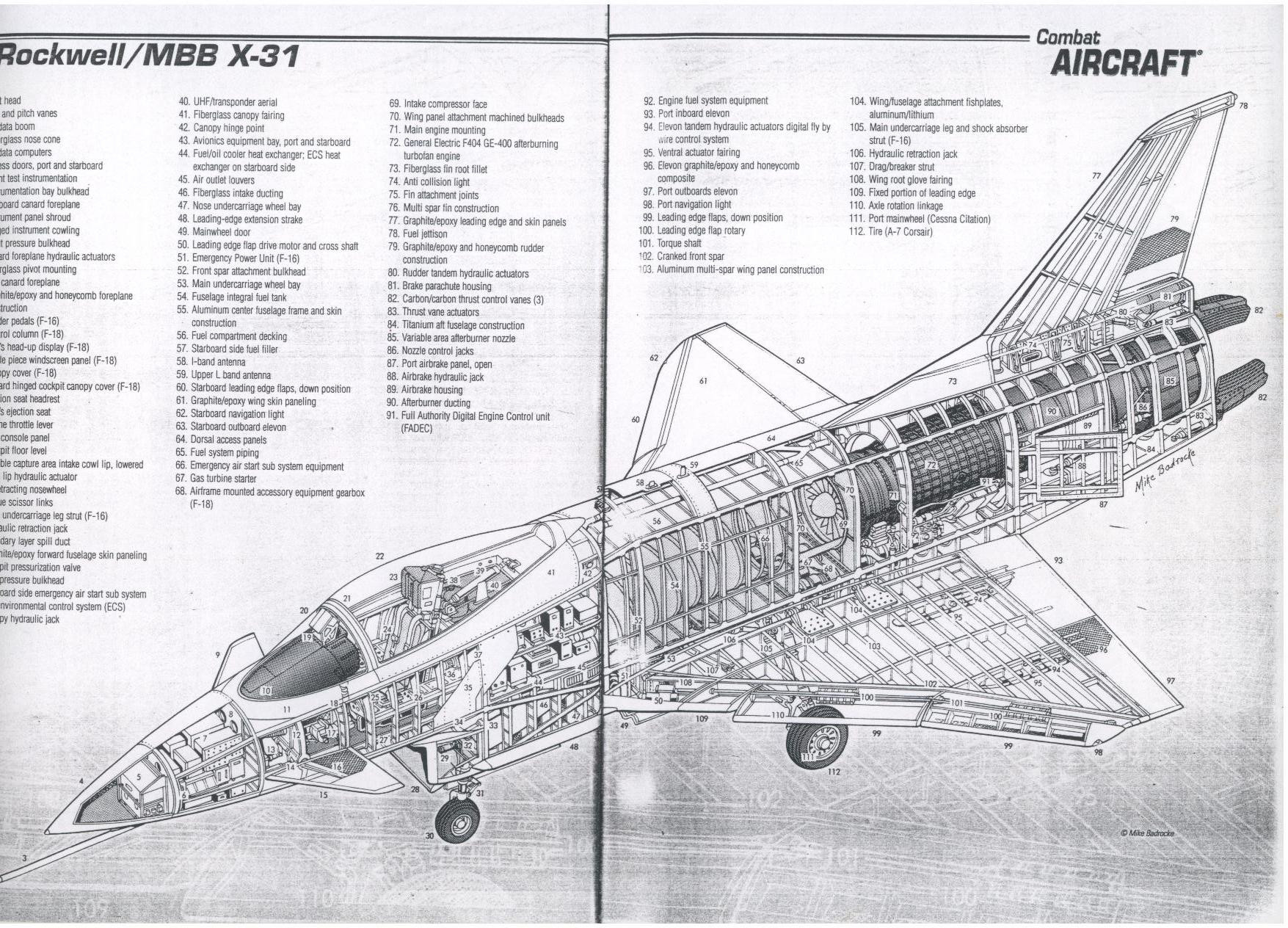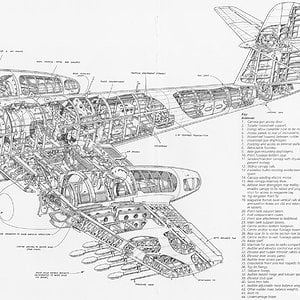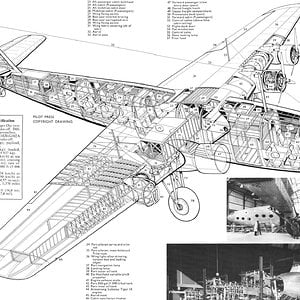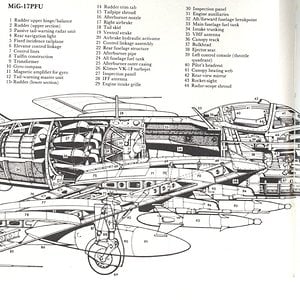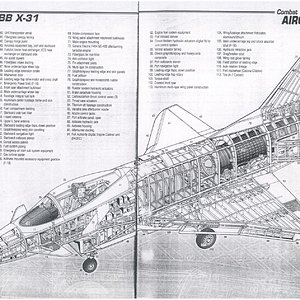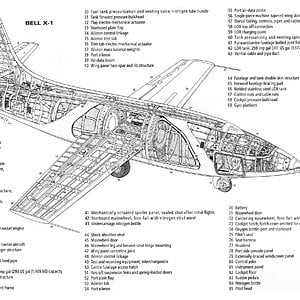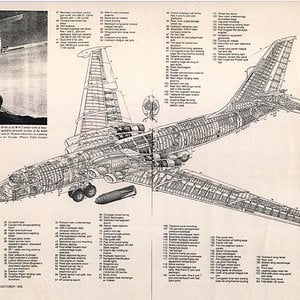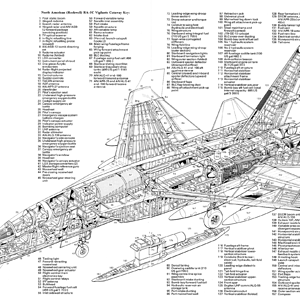Navigation
Install the app
How to install the app on iOS
Follow along with the video below to see how to install our site as a web app on your home screen.
Note: This feature may not be available in some browsers.
More options
You are using an out of date browser. It may not display this or other websites correctly.
You should upgrade or use an alternative browser.
You should upgrade or use an alternative browser.
HistoryTwo X-31s were built, with the first flying on October 11, 1990.[1] Over 500 test flights were carried out between 1990 and 1995. The X-31 featured fixed strakes along the aft fuselage, as well as a pair of movable computer-controlled canards to increase stability and maneuverability. There are no horizontal tail surfaces, only the vertical fin with rudder. Pitch and yaw are controlled by the three paddles directing the exhaust (thrust vectoring). Eventually, simulation tests on one of the X-31s showed that flight would have been stable had the plane been designed without the vertical fin, because the thrust-vectoring nozzle provided sufficient yaw and pitch control.
The X-31 showing its three thrust vectoring paddles.During flight testing, the X-31 aircraft established several milestones. On November 6, 1992, the X-31 achieved controlled flight at a 70° angle of attack. On April 29, 1993, the second X-31 successfully executed a rapid minimum-radius, 180° turn using a post-stall maneuver, flying well beyond the aerodynamic limits of any conventional aircraft. This revolutionary maneuver has been called the "Herbst maneuver" after Dr. Wolfgang Herbst, an MBB employee and proponent of using post-stall flight in air-to-air combat.[2] Herbst was the designer of the Rockwell SNAKE, which formed the basis for the X-31.[3]
Front-side view of the X-31 in Oberschleißheim, Germany.In the mid-1990s, the program began to revitalize and a $53 million VECTOR program was initiated capitalizing on this previous investment. VECTOR is a joint venture that includes the US Navy, Germany’s defense procurement agency BWB, Boeing's Phantom Works, and the European Aeronautic, Defense and Space Company in Ottobrunn, Germany. As the site for the flight testing, Naval Air Station Patuxent River in Maryland was chosen. From 2002 to 2003, the X-31 flew extremely short takeoff and landing approaches first on a virtual runway at 5,000 feet in the sky, to ensure that the Inertial Navigation System/Global Positioning System accurately guides the aircraft with the centimeter accuracy required for on the ground landings. The program then culminated in the first ever autonomous landing of a manned aircraft with high angle of attack (24 degree) and short landing. The technologies involved a differential GPS System based on pseudolite technology from Integrinautics and a miniaturized flush air data system from Nordmicro.[citation needed]
[edit] Serial numbersBuNo 164584, 292 flights – crashed on January 19, 1995, north of Edwards AFB, California. The crash was caused by ice inside the pitot tube, sending incorrect airspeed data to the flight control computers. Contributing factors included the replacement of a heated pitot tube with an unheated Kiel probe, and ground crew/pilot ignorance of an option to override computer control. The pilot ejected safely.[4][5][6]
BuNo 164585, 288 flights. Now on display at Oberschleißheim Museum (part of the Deutsches Museum).
[edit] Specifications (X-31)Data from Jane's All The World's Aircraft 1993–94[7]
General characteristics
Crew: one
Length: 43ft 4 in (13.21m)
Wingspan: 23 ft 10 in (7.26 m)
Height: 14 ft 7in (4.44m)
Wing area: 226.3 sq ft (21.02 m²)
Aspect ratio: 2.51:1
Empty weight: 11,410 lb (5,175 kg)
Loaded weight: 14,600 lb (6,622 kg)
Max takeoff weight: 15,935 lb (7,228 kg)
Powerplant: 1 × General Electric F404-GE-400 turbofan, 16,000 lbf (71 kN)(afterburning)
Performance
Maximum speed: Mach 1.28[8] (900 mph, 783 knots, 1,449 km/h)
Service ceiling: 40,000 ft (12,200 m)
Rate of climb: 43,000 ft/min (218 m/s)
Wing loading: 64.5 lb/ft² (315 kg/m²)
The X-31 showing its three thrust vectoring paddles.During flight testing, the X-31 aircraft established several milestones. On November 6, 1992, the X-31 achieved controlled flight at a 70° angle of attack. On April 29, 1993, the second X-31 successfully executed a rapid minimum-radius, 180° turn using a post-stall maneuver, flying well beyond the aerodynamic limits of any conventional aircraft. This revolutionary maneuver has been called the "Herbst maneuver" after Dr. Wolfgang Herbst, an MBB employee and proponent of using post-stall flight in air-to-air combat.[2] Herbst was the designer of the Rockwell SNAKE, which formed the basis for the X-31.[3]
Front-side view of the X-31 in Oberschleißheim, Germany.In the mid-1990s, the program began to revitalize and a $53 million VECTOR program was initiated capitalizing on this previous investment. VECTOR is a joint venture that includes the US Navy, Germany’s defense procurement agency BWB, Boeing's Phantom Works, and the European Aeronautic, Defense and Space Company in Ottobrunn, Germany. As the site for the flight testing, Naval Air Station Patuxent River in Maryland was chosen. From 2002 to 2003, the X-31 flew extremely short takeoff and landing approaches first on a virtual runway at 5,000 feet in the sky, to ensure that the Inertial Navigation System/Global Positioning System accurately guides the aircraft with the centimeter accuracy required for on the ground landings. The program then culminated in the first ever autonomous landing of a manned aircraft with high angle of attack (24 degree) and short landing. The technologies involved a differential GPS System based on pseudolite technology from Integrinautics and a miniaturized flush air data system from Nordmicro.[citation needed]
[edit] Serial numbersBuNo 164584, 292 flights – crashed on January 19, 1995, north of Edwards AFB, California. The crash was caused by ice inside the pitot tube, sending incorrect airspeed data to the flight control computers. Contributing factors included the replacement of a heated pitot tube with an unheated Kiel probe, and ground crew/pilot ignorance of an option to override computer control. The pilot ejected safely.[4][5][6]
BuNo 164585, 288 flights. Now on display at Oberschleißheim Museum (part of the Deutsches Museum).
[edit] Specifications (X-31)Data from Jane's All The World's Aircraft 1993–94[7]
General characteristics
Crew: one
Length: 43ft 4 in (13.21m)
Wingspan: 23 ft 10 in (7.26 m)
Height: 14 ft 7in (4.44m)
Wing area: 226.3 sq ft (21.02 m²)
Aspect ratio: 2.51:1
Empty weight: 11,410 lb (5,175 kg)
Loaded weight: 14,600 lb (6,622 kg)
Max takeoff weight: 15,935 lb (7,228 kg)
Powerplant: 1 × General Electric F404-GE-400 turbofan, 16,000 lbf (71 kN)(afterburning)
Performance
Maximum speed: Mach 1.28[8] (900 mph, 783 knots, 1,449 km/h)
Service ceiling: 40,000 ft (12,200 m)
Rate of climb: 43,000 ft/min (218 m/s)
Wing loading: 64.5 lb/ft² (315 kg/m²)

